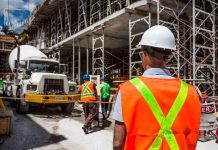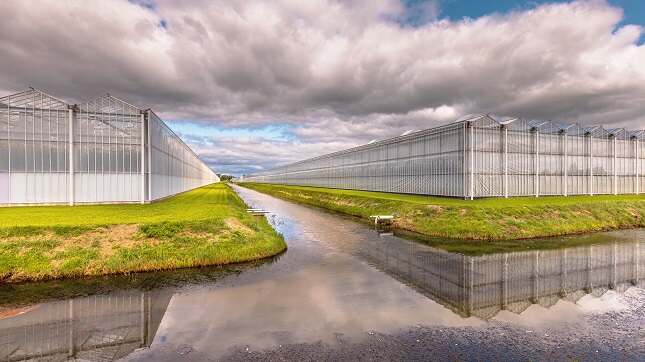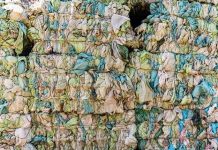Floods have a way of reminding us who’s really in charge. One heavy downpour, a few hours of rising water, and suddenly even well-built communities can find themselves fighting to stay dry. Across the country, specialized teams install flood barriers that combine engineering precision with field-tested reliability to businesses and critical infrastructure. Behind every modern defense, the gates and modular walls that hold back that force, lies a remarkable blend of design expertise, materials science, and rigorous testing.
Designing flood barriers isn’t just about building something strong. It’s about predicting chaos and turning it into controlled resistance. Engineers spend months, sometimes years, designing systems that can hold back tons of water pressure, debris impact, and unpredictable weather patterns, all while being deployable in minutes.
The Engineering Mindset Behind Modern Barriers
The core philosophy in flood defense design is simple: build for failure before it happens. Engineers start by studying hydrodynamic behavior, how water flows, where it exerts pressure, and how long materials can endure saturation. Every floodplain has its personality, and understanding it helps shape the barrier’s geometry, anchoring method, and material selection.
For example, coastal defense barriers must resist saltwater corrosion and wave energy, while inland systems focus on hydrostatic pressure from standing water. Engineers use computational fluid dynamics (CFD) simulations to test how water will move across different terrains and against various barrier profiles. These digital models predict stress points, identify potential leaks, and even simulate how debris, like logs or cars, might strike during a surge.
But modeling is just the start. Once a design looks promising on screen, it’s time to see how it performs in the real world.
Materials That Withstand the Unthinkable
The strength of a flood barrier depends as much on what it’s made of as on how it’s built. Traditional concrete walls are still used in permanent installations, but modern systems often rely on lightweight aluminum alloys, reinforced polymers, or composite fabrics that are easier to deploy and maintain.
Engineers pay attention to three critical traits:
- Strength-to-weight ratio, ensuring that barriers can be set up quickly without heavy machinery.
- Resistance to corrosion and fatigue, especially for coastal applications.
- Modularity, so that systems can be expanded or relocated based on evolving flood risks.
One popular trend in recent years is hybrid design, combining rigid aluminum frames with flexible membrane seals. This allows the system to adapt to uneven surfaces while maintaining watertight integrity.
Another quiet revolution is sustainability. Manufacturers are now experimenting with recycled materials and coatings that reduce environmental impact. After all, protecting a city should not come at the cost of damaging the planet it stands on.
Testing: The True Proof of Reliability
Even the smartest design means little until it’s tested under pressure. Flood barrier testing is a rigorous, multi-stage process that simulates real disaster conditions.
First come laboratory tests, controlled experiments where engineers push prototypes beyond expected stress limits. They measure seepage rates, joint performance, and deformation under hydrostatic load. Some systems are filled with thousands of liters of water to observe how the structure flexes and seals under pressure.
Next are field tests, where barriers face nature directly. Engineers set up full-scale sections near rivers, coastlines, or purpose-built test basins, then subject them to simulated flooding. These scenarios are not just about performance but also practicality. How quickly can the system be installed? How does it hold up against debris? Can untrained emergency personnel deploy it safely?
Finally, certification and regulatory testing ensure the system meets international standards like ISO 9001 or PAS 1188. Independent bodies assess durability, leakage rates, and ease of assembly. Only after passing this battery of tests can a flood barrier system be approved for municipal or commercial use.
Balancing Innovation with Reliability
One of the biggest challenges in flood defense design is balancing innovation with reliability. New materials and deployment mechanisms promise faster setup and lower costs, but engineers cannot afford to sacrifice durability for novelty. A barrier that works beautifully in theory must still perform after years of exposure to UV light, temperature swings, and corrosion.
That is why modern flood protection companies maintain continuous improvement programs. They gather data after every major flood event, examining what worked, what failed, and what could be improved. In many ways, each storm becomes another test, an uninvited one, but often the most instructive.
Some manufacturers also incorporate sensor technology into their barrier systems. Pressure sensors, leak detectors, and even IoT-enabled monitoring units allow real-time feedback during deployment. This integration helps engineers identify vulnerabilities faster and gives emergency teams better control during a crisis.
The Human Factor: Design Meets Reality
For all the technology involved, one factor remains constant: people. Flood barrier systems are only as effective as the teams who plan, install, and maintain them.
Engineers now collaborate closely with local governments, emergency services, and infrastructure planners to create solutions that fit real environments. A barrier that performs perfectly in a laboratory might struggle in an urban street with uneven pavement and tight corners. That is why many modern systems are tested not just for strength, but for usability.
Ease of deployment has become a design priority. The faster a system can be set up, the more lives and property it can protect. Engineers simulate emergency conditions to ensure that barriers can be deployed under stress, at night, and sometimes even in driving rain. It is not enough for a product to work; it must work when everything else is going wrong.
Why Continuous Testing Matters
Flood risk is not static. Climate change is shifting rainfall patterns and intensifying storm surges, meaning that barriers designed ten years ago may no longer meet current conditions. Continuous testing and iterative design keep systems relevant.
Some companies now use adaptive testing cycles, re-evaluating systems every few years as new environmental data emerges. This approach ensures that barriers evolve alongside changing climate realities, not after they have already been tested by disaster.
You might say that modern flood defense is not a single achievement but an ongoing conversation between engineers, nature, and experience. Every storm writes a new chapter.
The Future of Flood Protection
As cities expand and coastal populations grow, flood protection will only become more critical. The next generation of barriers will likely integrate advanced materials, self-sealing technologies, and digital monitoring platforms that predict breaches before they occur.
But even as systems become smarter, the fundamentals remain unchanged. Strong design, rigorous testing, and practical deployment are still the cornerstones of reliable protection. It is a discipline where success is measured not by how impressive the engineering looks, but by the quiet moments when a storm passes and the water stays exactly where it should, on the other side of the wall.









































